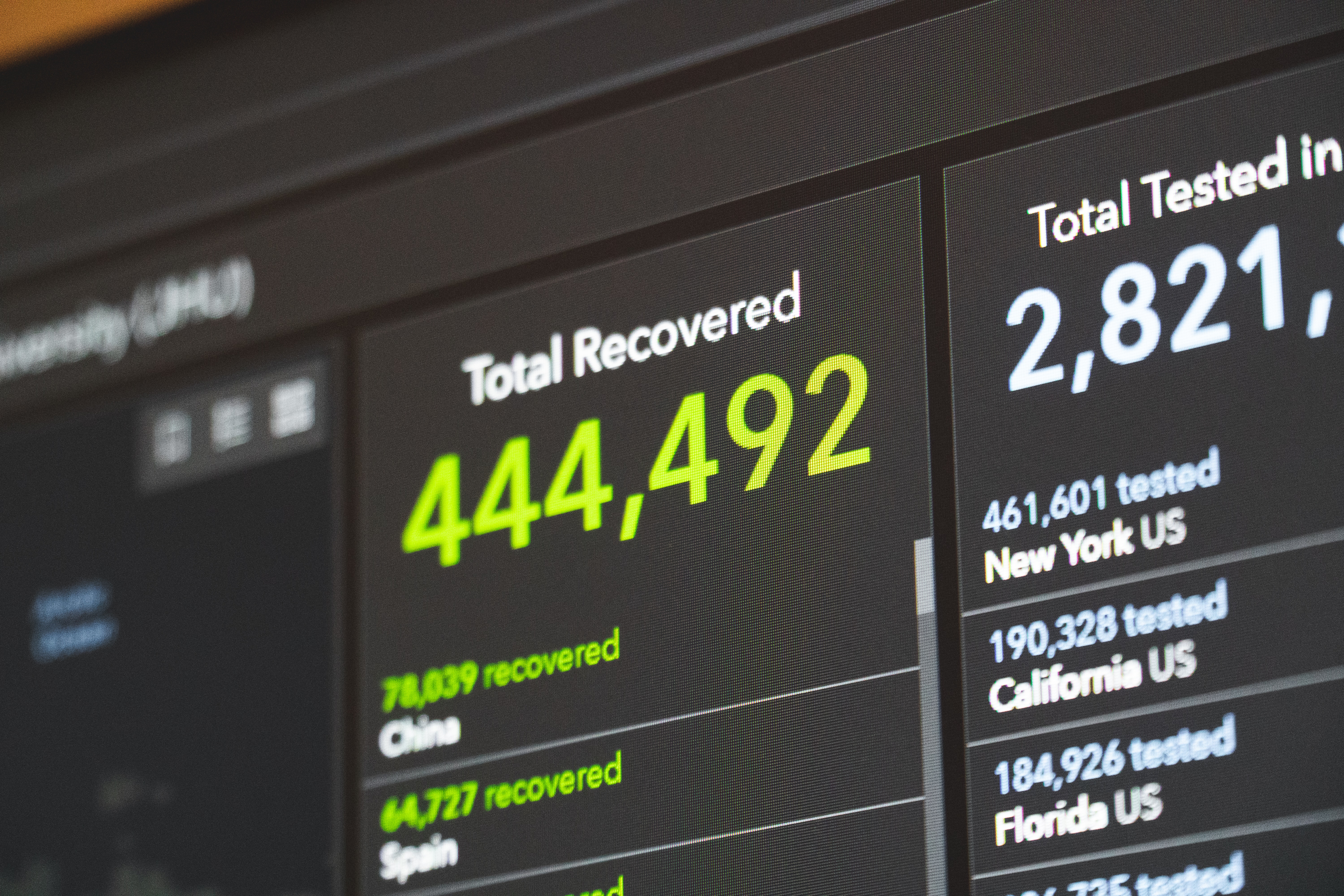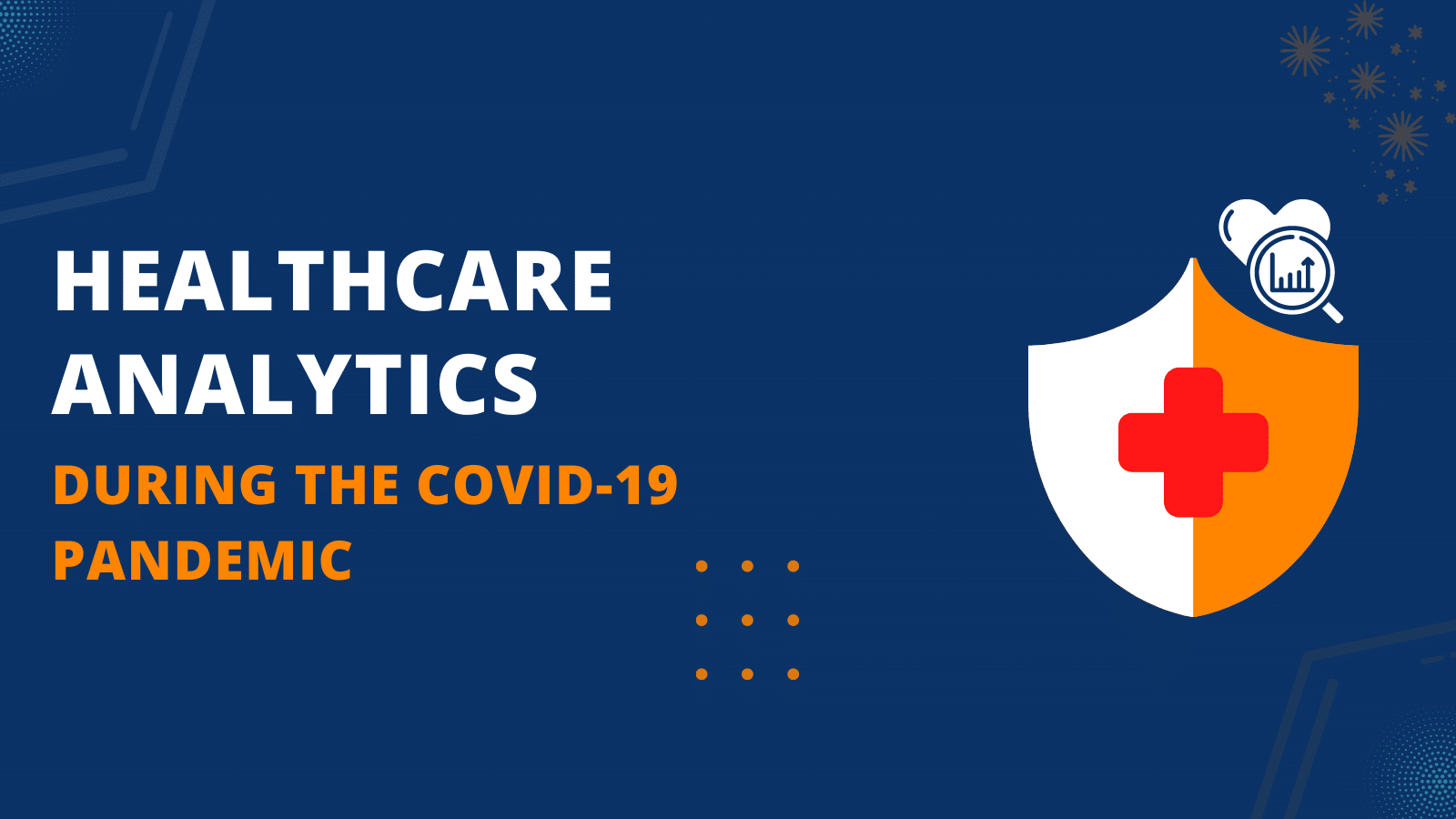
Healthcare Data Analytics During the COVID-19 Pandemic
Advanced healthcare data analytics have played a major role in the global fight against the coronavirus. By leveraging data during the pandemic, the healthcare sector has been able to trace the pandemic’s spread, monitor population health, predict disease severity and resulting demand, and provide optimized medical solutions to the public.
Being at the forefront of an intelligent, data-based response to the health crisis, data management technologies like data warehousing have become important assets for the healthcare industry.
What is Healthcare Data Analytics?

Healthcare data analytics refer to the set of processes used to analyze data for predicting medical trends, drawing insights, and managing both clinical and operational activities. Healthcare data exists in various forms such as electronic health records (EHRs), medical records (EMRs), prescriptions, radiology reports, claims, etc.
These analytics are broadly used by different stakeholders for a variety of use cases. Here are a few examples:
- Clinicians can analyze patient records to derive best practices in treating different diseases.
- Administrators can use data to forecast demand for specific healthcare services and optimize their operations accordingly.
- Insurance companies employ advanced analytics to evaluate settlement cases, track existing claims, identify opportunities, and reduce fraudulent acts.
- Public health officials and medical providers can employ analytics to track the geographical spread of diseases and design custom responses.
Types of Analytics
There are four main types of analytics: descriptive, diagnostic, predictive, and prescriptive analytics used to support these outcomes.
- Descriptive Analytics
It is the use of historical data for deciphering patterns and trends. Historical healthcare data can be analyzed to monitor the spread of contagious diseases through geographical regions.
2. Diagnostic Analytics
As the name suggests, these are used for diagnosing the cause of a health-related event. Here, clinicians and physicians can determine the illness in a patient by running diagnostic analytics on their symptoms.
3. Predictive Analytics
Predictive analytics is all about predicting future outcomes by analyzing past trends and patterns. By forecasting the severity of a viral disease, like COVID-19, health officials can take preemptive measures to control its symptoms.
4. Prescriptive Analytics
Prescriptive analytics utilize clinical data to determine the actions needed to reach a certain goal. Healthcare prescriptive analytics can help devise an optimal treatment route by looking at all pre-existing medical conditions in a patient.
Leveraging Healthcare Analytics during Covid-19
 The acute phases of the coronavirus expedited the need for data analytics in the healthcare sector. Growing at a compound rate of 29.7% annually, the healthcare analytics market size would expectedly reach US$70.2 Billion by 2027.
The acute phases of the coronavirus expedited the need for data analytics in the healthcare sector. Growing at a compound rate of 29.7% annually, the healthcare analytics market size would expectedly reach US$70.2 Billion by 2027.
Health officials have been leveraging the data collected on COVID-19 cases to optimize their critical response towards the pandemic. As per a recent survey of healthcare professionals, 88% of respondents reported a significant increase in their use of analytics during the pandemic.
Successful analytics rely significantly on the presence of a robust healthcare data warehouse (DWH). Before utilizing data, organizations need to ensure that it is present inside a centralized repository in an analysis-ready form. A healthcare DWH frees data from the various siloed sources and transactional systems across the enterprise, making it easily accessible.
Therefore, once providers populate the data warehouse with structured and cleansed data, analyzing it through reports and dashboards becomes easier.
To mount a more robust response to the COVID-19 emergency, healthcare providers have utilized healthcare informatics in several ways.
-
Disease Severity Forecasts
Health officials have used predictive analytics to forecast the severity of the virus and get ahead of the pandemic. Recently, medical researchers from Mount Sinai developed a predictive model forecasting the risk of mortality in individual covid patients. Similarly, researchers from Cleveland Clinic used predictive analytics to reveal the likelihood of a person testing positive for COVID-19.
Predictive modeling has also been used to forecast the spread of Covid-19 amongst populations. University of Chicago researchers designed a predictive model for accurately forecasting COVID-19’s spread and the ensuing weekly case count.
Such predictions help health officials take preemptive measures against COVID-19. For example, clinicians can recommend the right treatment by forecasting severity of symptoms in a patient. Furthermore, by predicting the spread of the virus, officials can recommend preemptive control measures on a community-level.
However, since the complex data pertaining to healthcare is spread across a myriad of different sources, it is imperative to first store it in a data warehouse and then monitor historical data for trends and insights. An enterprise data warehouse (EDW) is needed to arm predictive tools with the data necessary for generating actionable insights. We need an enterprise data warehouse (EDW) to provide predictive tools with the necessary data to generate actionable insights.
The warehouse environment itself maps and combines different sources, eventually providing the predictive tool with data ripe for analysis.
-
Demand-Based, Healthcare Resource Optimization
The rapid surge in the number of COVID-19 cases, especially during the initial waves of the pandemic, overburdened hospitals and clinics. Due to an unanticipated influx of critical patients, health facilities risked running out of physical and human resources. Consequently, healthcare data analytics presented a solution for optimizing resources to meet fast-changing demand.
In 2020, researchers at Cleveland Clinic used data analytics to forecast factors such as volume of patients, critical care availability, number of beds, ventilator availability, etc. Similarly, a team of researchers from Cologne University and Bartz & Bartz GmbH developed a tool called BaBSim.Hospital” which helps hospitals carry long-term capacity and resource planning. In the case of COVID-19, it helped forecast medical supply needs and plan accordingly.
Data Analytics in healthcare has been proven useful in balancing healthcare resources with volatile hospitalization demands. However, to ensure that analytics keep track of the ever-changing demand for healthcare resources, organizations need an agile data warehouse that is scalable and can prepare near real-time data for analysis.
Electronic data warehouses and comprehensive enterprise resource planning systems (ERP) top the wish list of healthcare c-suites as hospitals move towards demand-driven, value-based care provision.
-
Situational Awareness by Mapping Covid’s Movement
Despite the novelty of the coronavirus, healthcare officials have gathered critical knowledge of the virus by tracing its movement. The spatial spread of the virus, from its initial outbreak in China to the regional surges elsewhere, shows how covid-19 behaves under different circumstances.
By monitoring the movement of virus and volume of cases, national and global health organizations have been able to provide healthcare assistance based on geographical trends.
For example, District Health Information Software (DHIS2) COVID-19 package, by University of Oslo, has been used as a national health information system platform for integrated data management and analysis in more than 70 countries. Besides facilitating COVID-19 surveillance and response activities, the platform acts as a data warehouse for ensuring integrated analysis on populations.
Post-Pandemic Future of Healthcare Data Analytics
The advent of the Covid-19 pandemic has clearly expedited the need for data analytics in healthcare.
In the post-pandemic future, more healthcare organizations will look to create positive outcomes through the effective application of data analytics technologies. Healthcare decision-making, care delivery, and patient treatment will see analytics in healthcare as an essential part.
Increasing use of analytics will be accompanied by the emergence of health care data sources. Even now, the sensors in modern wearables and smartphones are being used as datapoints for collecting important healthcare data.
Moreover,t is imperative to store complex healthcare data from myriad different sources in a data warehouse and monitor historical data for trends and insights to arm predictive tools with necessary data for generating actionable insights.
Emergence of new healthcare analytics platforms such as DHIS 2 and SORMA (Surveillance Outbreak Response Management and Analysis System) show how analytics would be used as a critical tool for improving patient care.
Drive Powerful Analytics with Astera DW Builder
Having a robust data warehouse architecture is crucial for establishing an authentic data analytics platform. Enterprise data warehouses provide analytics tools with an integrated view of data necessary for conducting advanced analytics.
Astera DW Builder is a DWH automation tool that helps build modern data warehouses for effective analytics. To facilitate healthcare analytics, Astera DW Builder can be employed to develop an agile data management architecture that integrates various data sources and gives a holistic view of analysis-ready data.
Furthermore, it also connects the data warehouse to analytics tools, such as Power BI, Tableau, QlikView, etc., for visualizations and reporting. This allows providers to easily draw insights and take analytics-driven decisions through a single platform.
Want to learn more about building a healthcare data warehouse for driving powerful analytics? Start by checking out our blog on a beginner’s guide to leveraging a healthcare data warehouse.
 Astera AI Agent Builder - First Look Coming Soon!
Astera AI Agent Builder - First Look Coming Soon!


